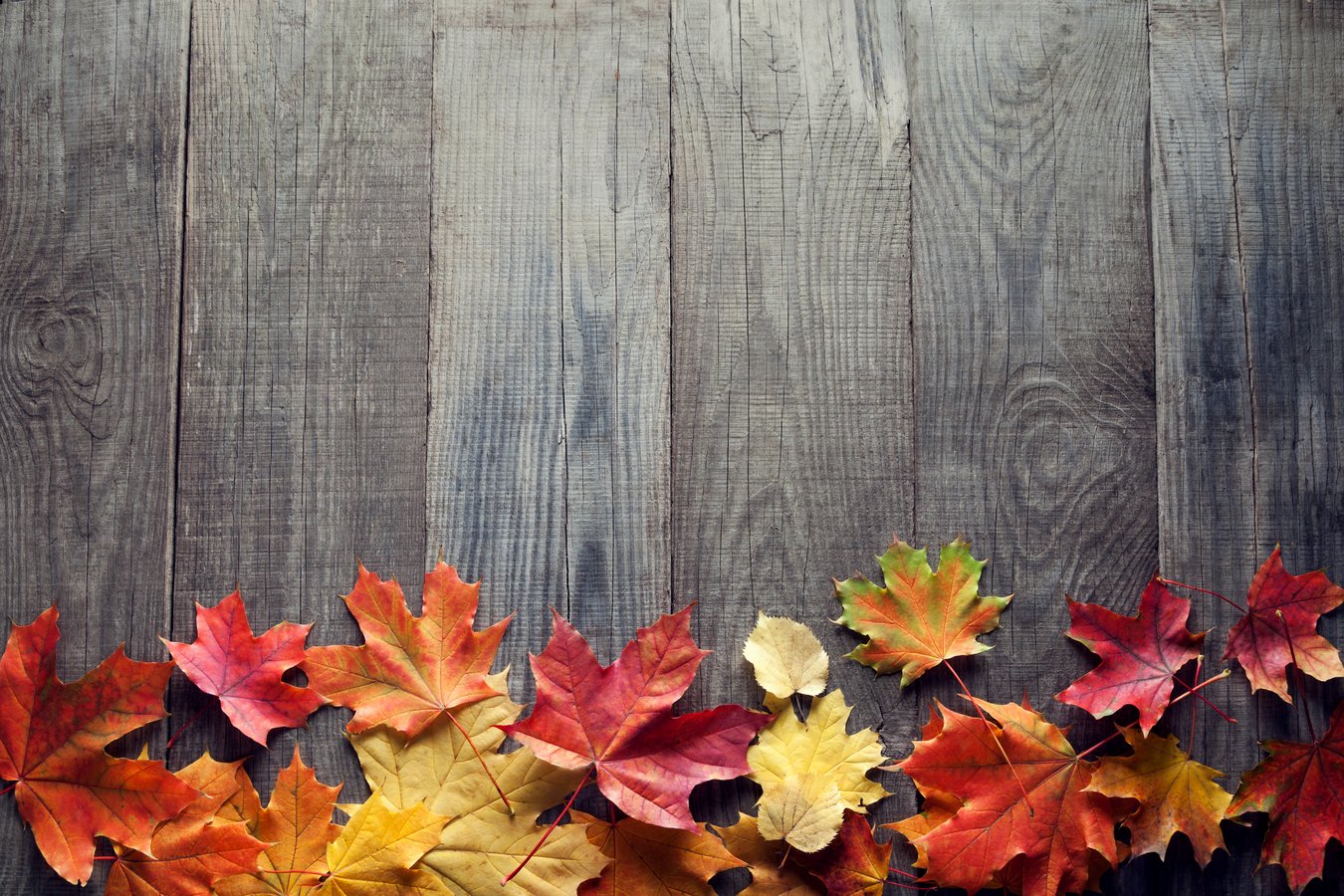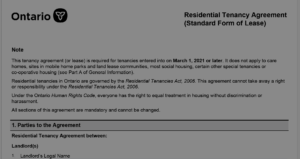When the last of summer’s heat is a faint memory, and you’re pulling out hoodies more often than shorts, it’s time to tackle tasks for a pleasant winter.
Summer provides us the time to get all the exterior projects done that need good weather to complete. Fall provides time to tackle home repair projects that were not comfortable to do in the heat of summer. Time to make sure you take care of all preventative maintenance to ensure a comfortable winter and a happy spring. Some are easy DIY tasks while others are better to leave to the professionals. They have the time, knowledge, and equipment to complete the projects efficiently.
So, whether you complete your Fall prep Top to Bottom or Outside in … this checklist of 15 Fall Maintenance tasks is a great place to start:
1. Roof
Do your best, or ask a professional to inspect the roofs surface, flashing, eaves, and soffits. Identify missing or curling shingles, poorly sealed skylights, or areas where you think little critters could enter. By adding this small annual inspection, you will ensure small repairs remain possible. Larger roof replacements can also be identified, timed and budgeted for.
2. Chimney
The frequency that you clean out a chimney depends on the type of wood you burn. Moisture content is the important element. Wet (green) logs require you to inspect and service your chimney every 50 burns. Bubbling logs give off more smoke causing increased build up of creosote and soot. Dry hardwoods burn hotter and cleaner. You can burn up to 70 hardwood fires between inspections and cleaning. A burn “log” is handy to track the number of fires making sure you don’t miss booking an inspection. This is especially true if you have multiple tenants over a few years.
With chimney fires causing damage in homes and requiring specialized cleaning services it can be an expensive oversight. Fire is one outcome of extended cleaning frequencies. When a chimney is left too long soot can harden resulting in a more costly cleaning when finally tackled.
With this in mind, it makes sense to take on this preventative step at a fraction of the costs. A quick way to tell if you need to clean your chimney is to run the point of your fireplace poker along the inside of your liner. If you have 1/8” or more (thickness of a nickel” you should book an inspection and cleaning.
If you have an older chimney, inspections can also detect if you have gaps between clay liner sections. These can also identify if mortar has fallen out, or if there is water damage anywhere around your fireplace.
3. Gutters
Everyone has seen the tree growing out of your neighbours’ gutters. Don’t let that be your house. Fall gutter cleaning ensures that your water drainage system works as intended drawing water away from your house and foundation.
First, you must make sure there is a good seal between the gutter and the facia. Otherwise, water rolls down the roof and behind the gutters directly down to your foundation. Ice falling of roof or heavy snow loads can easily bend gutters and compromise their efficiency.
The next part is the part everyone knows… the “gunk” removal! If you’re going to attempt doing this yourself, an old plastic spatula helps remove all the debris and grime easily. Be sure that you have a spotter holding your ladder. With most homes being multiple stories, it is better to hire a professional. They have the heights training and proper equipment to do the job safely. Book appointments early. Many homeowners in your neighbourhood hate doing this too and local contractors get booked up quickly. Alternatively, if you wish to avoid this semi-annual task and cost, you could consider installing leaf guards.
Finally, don’t forget the down spouts. Its all well and good to have the upper gutters clean and shiny directing water towards the downspouts. However, if the water can’t get out at the bottom, you will still have overflows around your house. Debris is common at the bottom of the downspout. However, don’t forget to check the turns and straight portions too with some light tapping.
4. Windows, Doors and Garage Doors
A thorough inspection of windows, doors and weather stripping will identify repairs needed. Don’t forget to check door sweeps too. This will help to keep heating costs down. While the weather is still warm enough, paint all exterior wooden window frames, doors and shutters too. Paint isn’t just a décor element. Exterior paint is designed to protect the the wood from moisture exposure in the winter and spring seasons.
At this stage don’t forget to give your garage doors some attention. Fresh paint not only protects them, but this is often the largest focal point on your home… so curb appeal will be affected by a peeling door. Now look up. Service the mechanics of your garage door regularly to make sure they will work during the coldest days. Before you move on, look down. Are there any obstacles on your driveway or near the door that could cause issues clearing if you get a large snow storm or heavy ice? Make sure those downspouts you already inspected are not pooling any water near the garage door entrance.
After the painting and mechanicals are taken care of the next place to address is the caulking. This is an often-over-looked item but is an important part in the weather protection and heat efficiency of your home. Caulking needs to be applied properly. Interior caulking should never be used outside. Using the paintable exterior type allows it to be blended into the areas it is protecting. Caulking should last several years, but as you notice it drying out and peeling or tearing replace as soon as possible before water finds its way thru tiny cracks.
5. Siding, Foundation & Other Exterior Repairs
Conduct a seasonal walk around the property specifically looking for damage or areas in need of even small repairs. Part of this is to inspect and clean siding. This will help uncover any gaps in exterior caulking in need of repair. Fill cracks and caulk edges as soon as possible while the temperature allows proper curing of the product. A mouse only needs a very tiny gap to enter your home.
Winter prep also includes checking walkways, railings and stairs for winter safety. Railings need to be sturdy, and walkways should have trip hazards removed. Don’t forget to ensure stairs need to be level and steady. It’s one thing to have to take care going down stairs when they’re dry, but covered in ice makes them dangerous.
6. Outdoor Water
Be sure to turn off any outdoor faucets and drain hoses. Remove all attachments to your taps. If possible, turn off the water supply from the inside of the house to the exterior taps. This will help eliminate those tiny splits in the faucet and connector pipes that cause drips or worse. Most of us have experienced the split in a hose. Often simply due to a tiny bit of water was allowed to freeze in it over the winter. You can either blow out hoses with a compressor or stretch them out on a slanted surface to create a draining angle. If you have water sprinkler system, consider hiring a professional to blow out all the lines and winterized the system. It is far too easy to damage sprinkler tips if not done properly.
Now its time to turn your attention to closing down your pool, winterizing the pond or other water features. Depending on your knowledge, time and patience, these are all jobs that you could do yourself. However, once again it might be wise to hire professionals when dealing with water and mechanics.
7. Window Wells
Window wells are another often-over-looked part of your home water management system. It rarely needs attention, but if not checked regularly could result in expensive damage to the home. When wells are not cleaned out regularly, they lose their ability to perform their intended duty – drawing water away from the house. By ignoring you could be promoting the opposite. Leaves and debris left in the window-well have dangerous consequences. Even an average rainfall could end up collecting as water in your window well. The leaves act like a pool liner preventing drainage. Sooner or later the level will rise and risk entering thru the foundation. If left long enough, or during a heavy downpour, you could have the water level rise high enough to enter thru the window itself. Keep them clean, and if possible, add window-well covers for extra protection.
Due to the destructive nature of water, it is recommended you take the time to check your house and/or content insurance to see if you are covered for water damage.
8. Patio & Deck Areas
Now there are those of you out there that are winter grillers so you can skip this section. However, if this does not sound like you, its time to properly pack away your grill. Thoroughly clean everything. Then, coat your burners and other metal parts with a small amount of cooking oil to protect from winter moisture. Wrapping your burners in plastic, will avoid spiders and insects from taking refuge in your BBQ. If not done you could risk poor starts or misdirected fuel in the spring.
Most of us just store our BBQs outside where they stand. In this case, leave the propane tank connected (but shut off) and invest in a good quality Bbq cover. If however, you store the Bbq inside, make sure to leave the propane tank outside. Do not ever put it in your garage, shed or other enclosed area. Simply disconnect, leave upright, tape a plastic bag over line opening to prevent insects from nesting there. Store in an open space. Be careful to keep tanks away from dryer or furnace vents or areas children may be playing in the winter.
Next comes the seemingly easiest task of putting away the summer furniture. Some have gone to the expense of buying furniture covers for everything. However if left outside you invite animals seeking a warmer dry refuge and risk damage from their occupation. Finding a dry safe location means transferring everything into your garden shed or already full garage. As you start, you’ll soon realize good planning is essential, and being a Jenga Expert comes in very handy too. Maneuvering larger tables around doors and shelves needs a little brawn but, more importantly brain and patience. Now it is just a big puzzle fitting everything in an order that makes those 1st Spring chairs easily accessible. A storage expert, or your local hardware store, may have hanging solutions to maximize the storage space. Saving you from building the ‘Leaning Tower of Pisa’
9. Lawn Winterization
It is best to plan on fertilizing your lawn 4 times a year. However, if you can only do one fertilization based on timing or finances, choose the fall. In the fall, select the fertilizer that’s labeled 4-1-2. Those numbers refer to the percentages of nitrogen, phosphorus, and potassium in the fertilizer. Better yet, book your fertilization with a professional. They can determine the best blend based on the grass type and local soil conditions. You (or they) should apply the fertilizer about three weeks before the last mowing of the season.
To get the most out of your fertilizing, make sure you water the lawn well to carry the nutrients are taken down to the roots. The roots store these nutrients to have the best start in the spring. Fall grass needs watering to build up strength for the winter. So don’t put away those hoses and sprinklers until the ground starts to freeze.
Another important step for a healthy lawn is to aerate it before the ground freezes. Aeration relieves compaction caused by foot traffic and creates space in the soil. This allows air, nutrients, and water to get to roots. Your soil is a whole biosystem that needs to be kept healthy. You should plan to aerate your lawn at least once a year, preferably in the fall. If possible, you can do this step two or three times each year for maximum benefits.
Now, don’t forget to keep that mower handy for some final runs. Here again, you will need some changes. Drop the blades! Just this once… set to 1-1/2” to 2”. Rake up or mulch leaves so you don’t have a wet mess and layer of debris blocking the young spring grass sprouts. By cutting shorter, you allow the grass to be in the best growing condition for the spring. You also don’t experience long grass lying down when to cut, once again blocking sun and new growth.
10. Tree & Shrubs Preparation
Plants go dormant in the fall and winter, which makes this the ideal time to do the necessary pruning. This could be for size management or to remove weaker limbs and sections. If you have trees on your property, hiring an arborist every few years for an inspection will identify any preventative maintenance required.
11. Driveways & Sidewalks
After raking up the leaves on your property it is a good time to prepare for snow removal season. Want to avoid sidewalk ploughs, or your own snow blower, from tearing up the edge of your lawns or edging? The simple addition of reflective markers along edges before the ground freezes can help guide machinery properly. Add a final fall property walk-around to remove rocks, dog leash holders, extension cords, light cords and hoses from any area requiring snow removal.
12. Heating Systems
First things first. Remove your window AC or portable AC units packed up and put away. If you have an exterior unit, you’ll need to cover with the insulated cover. Now, the next highly recommended step is to pre-booking a furnace inspection before you need to activate the system. This step will help take care of simple maintenance updates to avoid an unexpected breakdown in the middle of winter. East Vista Home Services is proud to partner with True North Heating and Air. EVHS can coordinate annual service calls so you are never caught off guard forgetting to conduct this important audit.
Another simple step is to replace your furnace filter regularly. This is especially true in the fall before turning on your furnace heat again. This another task you can download to a property manager. If you are a landlord they can coordinate to make sure this step is not missed by your tenant. It would be a shame for your furnace system to have problems due to forgetting to install a $20 filter.
If you have an older home, you may still have radiators as part of your heat sources. If a portion of your radiator remains cold, its likely trapped air requiring you to ‘bleed the line’. In this case, look for the small valve and then use the radiator key, ¼”/#12 socket or flat-headed screwdriver. My turning counterclockwise you can allow water to drip out, onto a small dish, and release the trapped air. By doing this you will let hot water get to those cold fins.
13. Thermostat Sensor & Batteries
The heating system can only work as well as the sensors in your home. Clean your thermostat’s heat sensor, contact points, contacts, and check accuracy. Since, most individuals do not have the skills for this, let your furnace technician perform this step too.
Replace thermostat batteries at the beginning of the season to avoid unplanned search in the middle of a cold winter’s night. Once again, if you have a pre-booked furnace call or a regular property inspection, ask to add this preventative.
14. Check Smoke & Carbon Monoxide Detectors
Before going back inside, with windows and doors closed and heaters cranked up, its time to check your detectors have not reached their expiration date. Smoke detectors usually last 10 years, while CO detectors only last 6 years. In Canada we have our daylight savings time switches, this provides the ideal time to ensure detector batteries are always fresh.
15. Fall Deep Clean and Winter Preparation Kit
Just like Spring cleaning time, there should be a Fall Deep Clean process. As part of this, remove the lint buildup in dryer vents to ensure efficiency and prevent possible fires started by winter static electricity. Then move to your kitchen to keep it efficient and looking great. This would include degreasing range hood and filter; cleaning the oven; vacuum refrigerator coils; clean light fixtures; wash grout and backsplash to remove all grease and food that might have been splashed; finally make sure to give a good cleaning of all garbage cans, recycling bins and small appliances. If you don’t have deep cleaning in your genes, or the time, hire a good cleaner for a semi-annual blitz. It will need to be budgeted for, but should not be skipped.
BEFORE the snow flies, before you finish putting away your garden furniture, make sure you leave shovels, salt pails, outdoor extension cords and snow blowers accessible. It also makes sense to purchase your choice of ice management additive (sand or salt) prior to the first storm to not be left with none..
Finally, if you have decided to hire a professional for the snow removal, it is important to book early and clearly understand the terms of your contract. Are you first or last on the route? Do you have to wait for the snow to stop before they come out? Where is the appropriate place to pile snow? Will they be using large machinery for driveway and sidewalk and supplementing with hand tools for the smaller areas, or will you or your tenant be responsible for shoveling the porch, stairs and pathways.
Don’t forget about the back and side doors or clearing spaces for pets to get outside too!
Schedule, Assign & Check-off
As with anything, it is better to plan ahead by budgeting for, scheduling and hiring professionals when needed. Enjoy your Fall Maintenance! Its a great way to experience some fresh weather before we move inside. And remember, it’s never too early to pre-book some of the projects with East Vista Home Services.





